In its broadest term, Universal Design (UD) refers to "design for everyone". For the Built Environment, it focuses on creating an inclusive society, where the young, the elderly, and persons with limited mobility can continue to enjoy living in familiar surroundings with their families and friends.
1 Preiser, Wolfgang F E [2001], Universal Design Handbook, McGraw-Hill, New York"
7 Principles of Universal Design
The Seven Principles of Universal Design2, developed by the Centre for Universal Design, North Carolina State University.
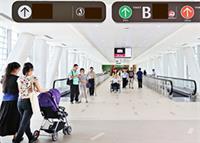 |
Principle 1 – Equitable Design
The design is useful and marketable to people with diverse abilities.
|
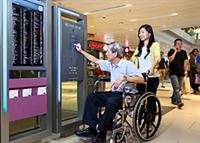 |
Principle 2 – Flexibility in Use
The design accommodates a wide range of individual preferences and abilities.
|
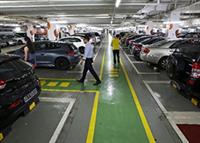 |
Principle 3 – Simple and Intuitive
Use of the design is easy to understand, regardless of the user’s experience, knowledge, language skills, or current concentration level.
|
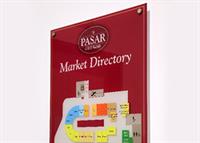 |
Principle 4 – Perceptible Information
The design communicates necessary information effectively to the user, regardless of ambient conditions or the user's sensory abilities.
|
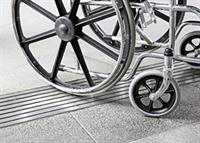 |
Principle 5 – Tolerance for Error
The design minimizes hazards and the adverse consequences of accidental or unintended actions.
|
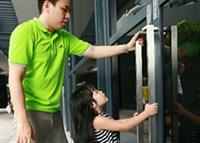 |
Principle 6 – Low Physical Effort
The design can be used efficiently and comfortably and with a minimum of fatigue.
|
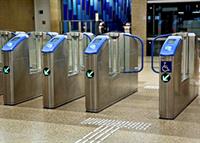 |
Principle 7 – Size and Space for Approach and Use
Appropriate size and space is provided for approach, reach, manipulation, and use regardless of user’s body size, posture, or mobility.
|
© Copyright 2006 The Centre for Universal Design, NC State University Raleigh, North Carolina, USA
Understanding Users
Universal Design can be achieved through a good appreciation of the board range of abilities exhibited by the various user groups in the community.
This guide sets out the full range of requirements and guidelines so that designers are able to work towards an accessible environment where people of different abilities can live independently.
The guide begins with the needs of the following groups of persons of different abilities:
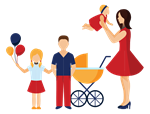 |
Infants and Children
Infants and children are at their early stage of life. They are usually treated as special persons who require physical and cognitive care from their caregivers.
Family-friendly features are therefore highly recommended for the convenience of infants and children, as well as their caregivers. These include wider corridors for baby carriages, nursing rooms, and appropriate anthropometrically scaled furniture and sanitary fixtures.
|
|
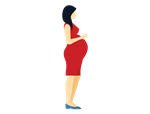
|
Expectant Mothers
Expectant mothers experience a host of physiological and emotional changes during pregnancy. Common symptoms include fatigue, lower backache, and difficulties in walking and balancing.
It is therefore recommended that handrails for additional support and seating should be generously provided along travel routes and where waiting is likely.
|
|
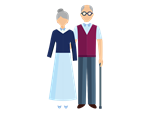
|
Older Persons
Older persons are usually characterised as a vulnerable group with high probability of medical conditions, reduced cognitive function and impaired physical capacity. Day-to-day tasks that will pose problems for them are those that require physical strength and sustained effort, in particular tasks related to indoor and outdoor mobility.
Provisions such as extra handrails for support, slip-resistant floor finishes and other senior-friendly features will enable older persons to move around independently and engage in daily activities.
|
|
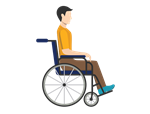
|
Wheelchair Users
Wheelchair users often face difficulties with negotiating a change in levels and manoeuvring around in confined and congested spaces.
The built environment therefore needs to be designed with accessibility features that meet their needs, such as ramps with a gentler gradient, accessible lifts and toilets, and signage that guide them to such facilities.
|
|
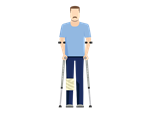
|
The Ambulant Disabled
Persons with ambulant disability - either temporary or permanent in nature - are likely to exhibit unstable and slow movement.
Special consideration should be given to ensure ease of access and movement for the ambulant disabled through the careful provision of parking areas, paths, kerbs, pedestrian crossings, street furniture, open spaces and sanitary provisions.
|
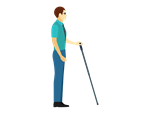 |
Persons with Visual Impairment
The visually impaired rely on the decreased ability of their vision, as well as other aids, to find their way around.
To better help them move around more independently, it is important to provide physical and sensory cues, such as touch, sound, smell, and tactile or audible information. |
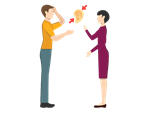 |
Persons with Hearing Impairment
As the hearing impaired are not able to receive audio information, all information should be transmitted through others means, such as substituting audio alerts with visual alerts and allowing users to configure the frequency and volume of audible cues. |